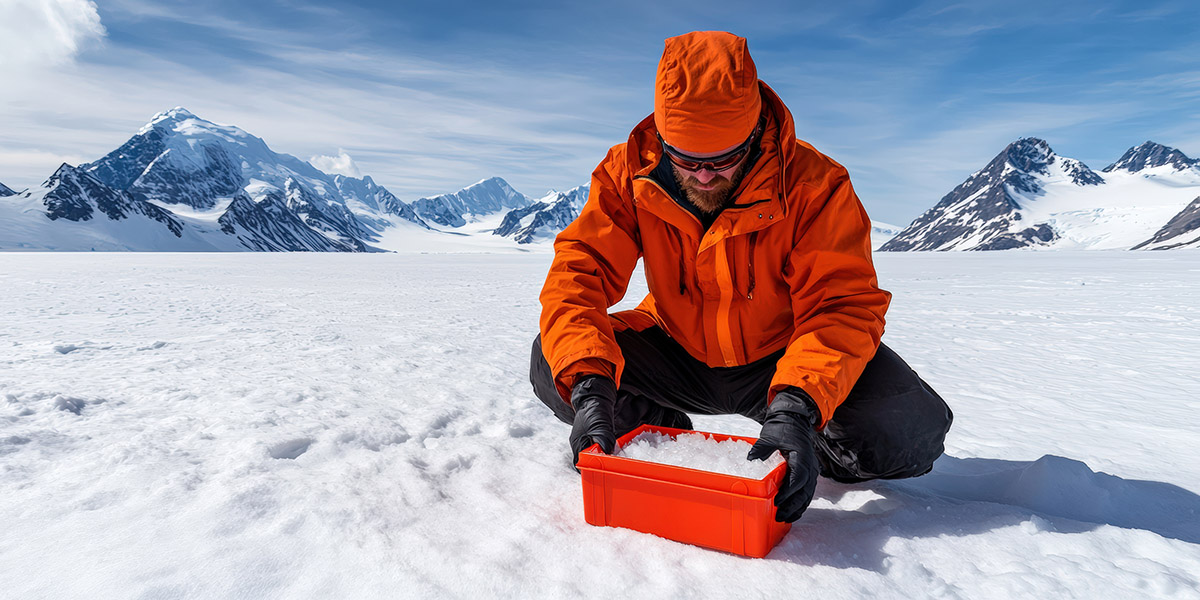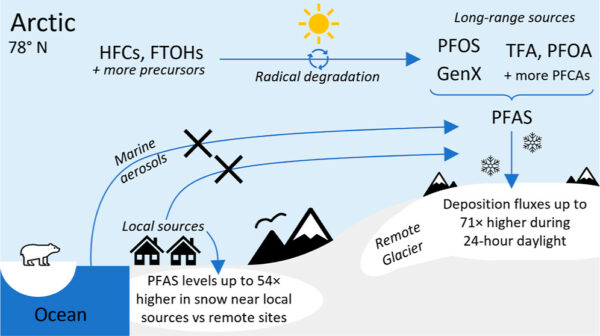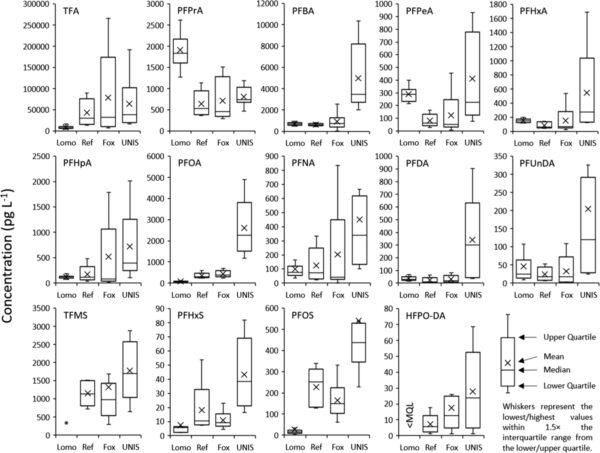Changing Seasons, Shifting Chemistry: PFAS Variability in the Arctic

Researchers have found a link between seasonal atmospheric photochemistry and the formation of certain per- and polyfluoroalkyl substances (PFAS).
In a study of Arctic surface snow, researchers investigated seasonal light’s effect on the formation and deposition of PFAS. Both perfluoroalkyl carboxylic acids (PFCAs) and perfluoroalkyl sulfonic acids (PFSAs) can form in the atmosphere. This occurs during the degradation of fluorotelomer alcohols (FTOHS), n-alkylated perfluoroalkane sulfonamides (FASAs), and hydrofluorocarbons (HFCs). Additionally, solar radiation can cause trifluoroacetic acid (TFA) deposition. This is due to solar radiation initiating the atmospheric formation of radicals that can degrade TFA precursors. This study investigated the amount of PFAS during 24-hour daylight versus partial and 24-hour darkness in arctic snow.
You can also read: What’s All The Fuss About PFAS?

This figure summarizes the local and atmospheric sources of PFAS in the Arctic. Courtesy of Sources and Seasonal Variations of Per- and Polyfluoroalkyl Substances (PFAS) in Surface Snow in the Arctic.
The Cold Approach
In Longyearbyen, Svalbard, local sources of PFAS include landfill leachate and runoff from firefighting training sites. In addition to these sources, surface snow on ice cap Foxfonna mostly contained PFAS from long-range atmospheric processes. To investigate these sources, ultra-performance liquid chromatography and SFC tandem mass spectrometry were employed to measure 45 total PFAS. Researchers chose six sites for sampling, with eight to ten sampling events at each site. To minimize post-depositional effects, researchers took samples as soon as possible after precipitation.
Seasonal Changes: Learning More From an Ice Core
Researchers compared results from the snow samples to an ice core from ice cap Lomonosovfonna, which spanned from 2006 – 2019. This glacial location was likely to have primarily received PFAS input from long-range atmospheric sources. Thus, this comparison provided insight into the PFAS contribution from local versus atmospheric sources for the various sites. Researchers found that Foxfonna’s PFAS sources were primarily long-range atmospheric compared to those in the Longyearbyen settlement. TFA comprised 95% and 96% of the mass of C2 – C11 PFCAs at the reference sites and Foxfonna, respectively. Other PFCAs contributed <1.7%. In the Longyearbyen settlement, TFA comprised 85% of C2 – C11 PFCAs, with others contributing up to 6.7%. These findings confirmed that local sources more greatly affected Longyearbyen than the reference sites and Foxfonna.

Boxplots of PFAS concentrations in the Lomonosovfonna ice core and surface snow samples. Courtesy of Sources and Seasonal Variations of Per- and Polyfluoroalkyl Substances (PFAS) in Surface Snow in the Arctic.
Solar Flux and Glacial PFAS
The results of this study showed statistically significant correlations with solar flux at the Foxfonna site. Median deposition fluxes of C2 – C11 PFCAs, PFCAs, PFOS, and HFPO-DA (GenX) were 7.6 – 71x higher during 24-hour daylight. Median fluxes of FBSA, PFOS, and HFPO-DA were 190, 22, and 23x higher, respectively, compared to partial or 24-hour darkness. The collected data suggest that seasonal light can enable photochemistry for atmospheric formation and deposition of PFAS in the Arctic. Additionally, this study found evidence for the possible formation of PFOS and GenX from precursors in the atmosphere.
